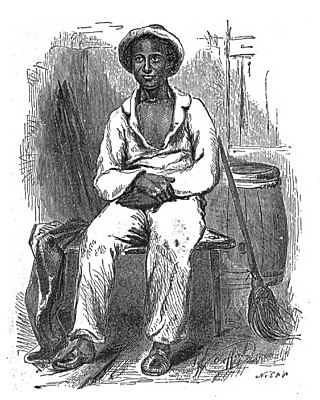
Solomon Northup was an American abolitionist and the primary author of the memoir Twelve Years a Slave. A free-born African American from New York, he was the son of a freed slave and a free woman of color. A farmer and a professional violinist, Northup had been a landowner in Washington County, New York. In 1841, he was offered a traveling musician's job and went to Washington, D.C. ; there he was drugged and kidnapped into slavery. He was shipped to New Orleans, purchased by a planter, and held as a slave for 12 years in the Red River region of Louisiana, mostly in Avoyelles Parish. He remained a slave until he met Samuel Bass, a Canadian working on his plantation who helped get word to New York, where state law provided aid to free New York citizens who had been kidnapped and sold into slavery. His family and friends enlisted the aid of the Governor of New York, Washington Hunt, and Northup regained his freedom on January 3, 1853.
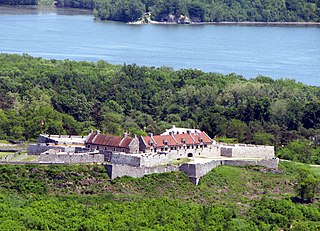
Fort Ticonderoga, formerly Fort Carillon, is a large 18th-century star fort built by the French at a narrows near the south end of Lake Champlain, in northern New York, in the United States. It was constructed by Canadian-born French military engineer Michel Chartier de Lotbinière, Marquis de Lotbinière between October 1755 and 1757, during the action in the "North American theater" of the Seven Years' War, often referred to in the US as the French and Indian War. The fort was of strategic importance during the 18th-century colonial conflicts between Great Britain and France, and again played an important role during the Revolutionary War.

Washington County is a county in the U.S. state of New York. As of the 2020 census, the population was 61,302. The county seat is Fort Edward. The county was named for U.S. President George Washington.
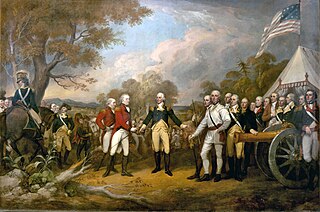
The Battles of Saratoga marked the climax of the Saratoga campaign, giving a decisive victory to the Americans, significantly supported by the French, over the British in the American Revolutionary War. British General John Burgoyne led an invasion army of 7,200–8,000 men southward from Canada in the Champlain Valley, hoping to meet a similar British force marching northward from New York City and another British force marching eastward from Lake Ontario; the goal was to take Albany, New York. The southern and western forces never arrived, and Burgoyne was surrounded by American forces in upstate New York 15 miles (24 km) short of his goal. He fought two battles which took place 18 days apart on the same ground 9 miles (14 km) south of Saratoga, New York. He gained a victory in the first battle despite being outnumbered, but lost the second battle after the Americans returned with an even larger force.

The Battle of Valcour Island, also known as the Battle of Valcour Bay, was a naval engagement that took place on October 11, 1776, on Lake Champlain. The main action took place in Valcour Bay, a narrow strait between the New York mainland and Valcour Island. The battle is generally regarded as one of the first naval battles of the American Revolutionary War, and one of the first fought by the United States Navy. Most of the ships in the American fleet under the command of Benedict Arnold were captured or destroyed by a British force under the overall direction of General Guy Carleton. However, the American defense of Lake Champlain stalled British plans to reach the upper Hudson River valley.
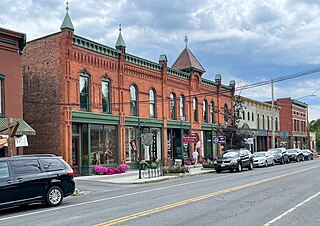
Schuylerville is a village in Saratoga County, New York, United States. The village is located in the northeastern part of the Town of Saratoga, east of Saratoga Springs. The Village of Victory is adjacent to Schuylerville to the southwest and the Hudson River forms the village's eastern border. The population was 1,386 at the 2010 census. The village was incorporated in 1831 and is named after the Schuyler family, a prominent family of Dutch descent in colonial America.
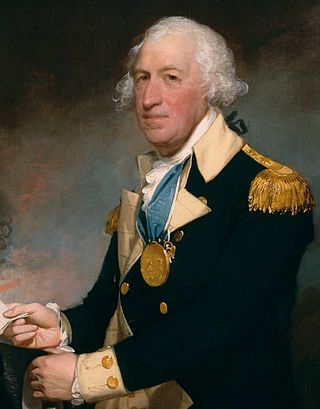
Horatio Lloyd Gates was a British-born American army officer who served as a general in the Continental Army during the early years of the Revolutionary War. He took credit for the American victory in the Battles of Saratoga (1777) – a matter of contemporary and historical controversy – and was blamed for the defeat at the Battle of Camden in 1780. Gates has been described as "one of the Revolution's most controversial military figures" because of his role in the Conway Cabal, which attempted to discredit and replace General George Washington; the battle at Saratoga; and his actions during and after his defeat at Camden.

The Saratoga campaign in 1777 was an attempt by the British high command for North America to gain military control of the strategically important Hudson River valley during the American Revolutionary War. It ended in the surrender of the British army, which historian Edmund Morgan argues, "was a great turning point of the war, because it won for Americans the foreign assistance which was the last element needed for victory."

Philip John Schuyler was an American general in the Revolutionary War and a United States Senator from New York. He is usually known as Philip Schuyler, while his son is usually known as Philip J. Schuyler.
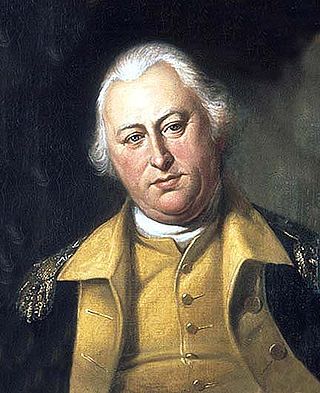
Benjamin Lincoln was an American army officer. He served as a major general in the Continental Army during the American Revolutionary War. Lincoln was involved in three major surrenders during the war: his participation in the Battles of Saratoga contributed to John Burgoyne's surrender of a British army, he oversaw the largest American surrender of the war at the 1780 siege of Charleston, and, as George Washington's second in command, he formally accepted the British surrender at Yorktown.

The 1777 Siege of Fort Ticonderoga occurred between the 2nd and 6 July 1777 at Fort Ticonderoga, near the southern end of Lake Champlain in the state of New York. Lieutenant General John Burgoyne's 8,000-man army occupied high ground above the fort, and nearly surrounded the defenses. These movements precipitated the occupying Continental Army, an under-strength force of 3,000 under the command of General Arthur St. Clair, to withdraw from Ticonderoga and the surrounding defenses. Some gunfire was exchanged, and there were some casualties, but there was no formal siege and no pitched battle. Burgoyne's army occupied Fort Ticonderoga and Mount Independence, the extensive fortifications on the Vermont side of the lake, without opposition on 6 July. Advance units pursued the retreating Americans.
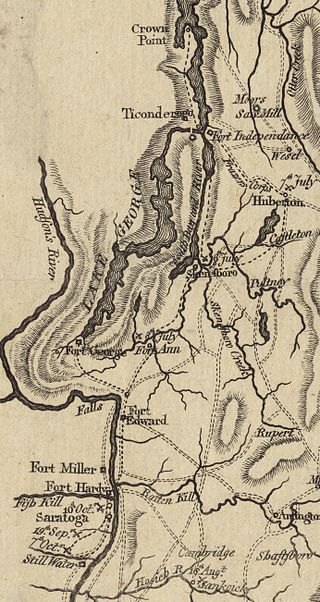
The Battle of Hubbardton was an engagement in the Saratoga campaign of the American Revolutionary War fought in the village of Hubbardton, Vermont. Vermont was then a disputed territory sometimes called the New Hampshire Grants, claimed by New York, New Hampshire, and the newly organized, not yet recognized, but de facto independent government of Vermont. On the morning of July 7, 1777, British forces, under General Simon Fraser, caught up with the American rear guard of the forces retreating after the withdrawal from Fort Ticonderoga. It was the only battle in Vermont during the revolution.

Saratoga National Historical Park is a United States National Historical Park located in the Town of Stillwater in eastern New York, 30 miles north of Albany. The park preserves the site of the Battles of Saratoga.
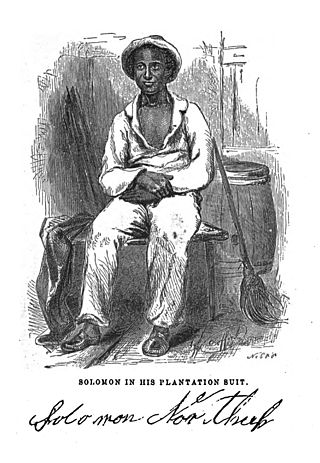
Twelve Years a Slave is an 1853 memoir and slave narrative by Solomon Northup as told to and written by David Wilson. Northup, a black man who was born free in New York state, details himself being tricked to go to Washington, D.C., where he was kidnapped and sold into slavery in the Deep South. He was in bondage for 12 years in Louisiana before he was able to secretly get information to friends and family in New York, who in turn secured his release with the aid of the state. Northup's account provides extensive details on the slave markets in Washington, D.C., and New Orleans, and describes at length cotton and sugar cultivation and slave treatment on major plantations in Louisiana.
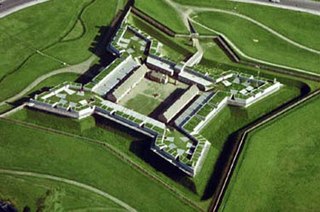
The siege of Fort Stanwix began on August 2, 1777 and ended on August 22, 1777. Fort Stanwix, at the western end of the Mohawk River Valley, was a primary defense point for the Continental Army against the British and indigenous forces aligned against them during the American Revolutionary War. The fort was occupied by Continental Army forces from New York and Massachusetts under the command of Colonel Peter Gansevoort. The besieging force was composed of British regulars, Loyalist soldiers, Hessians, and indigenous warriors, under the command of Brigadier General Barry St. Leger. St. Leger's expedition was a diversion in support of Lieutenant General John Burgoyne's campaign to take control of the Hudson River Valley to the east.

Wing-Northup House, also known as the Washington County Historical Society Headquarters, is a historic home located at Fort Edward in Washington County, New York. It was built about 1815 by entrepreneur Daniel Wood Wing and is a two-story, five-bay, center entrance brick front building, with a two-story brick ell. A one-story brick side wing was added about 1880. The property was acquired in 1884 by James M. Northup, and in 1982 by the Washington County Historical Society.

Fort Edward is a town and the county seat of Washington County, New York, United States. The population was 5,991 at the 2020 census. The municipal center complex is on U.S. Route 4 between the villages of Hudson Falls and Fort Edward. When construction of the complex was completed in 1994, most of the administrative offices were moved from the original county seat of Hudson Falls to this location. The town of Fort Edward is part of the Glens Falls Metropolitan Statistical Area.

Solomon Northup's Odyssey, reissued as Half Slave, Half Free, is a 1984 American television film based on the 1853 autobiography Twelve Years a Slave by Solomon Northup, a free black man who in 1841 was kidnapped and sold into slavery. The film, which aired on PBS, was directed by Gordon Parks with Avery Brooks starring as the titular character. It was the second film to be funded by the National Endowment for the Humanities, following A House Divided: Denmark Vesey's Rebellion in 1982. Parks returned to direct the film after years of absence. He chose to work in the Deep South and to collaborate with a crew of mixed races. The film first aired on PBS on December 10, 1984 and as part of PBS's American Playhouse anthology television series in the following year. It was released on video under the title Half Slave, Half Free.
James H. Birch was an American slave trader in the District of Columbia.

Edwin Epps House is a Creole cottage built in 1852 in part by Solomon Northup on Bayou Boeuf near Holmesville in Avoyelles Parish, Louisiana. It was built for Edwin Epps, a slaveholder. The house was a "double-sided, wood frame house with one chimney, and a tin roof" of mid-sized farmers. The Edwin Epps Plantation Site, where the house originally stood, is located off of LA 1176 on Carl Hunt Road. It is one of the historic sites of Solomon Northup's enslavement on the Northup Trail.



















